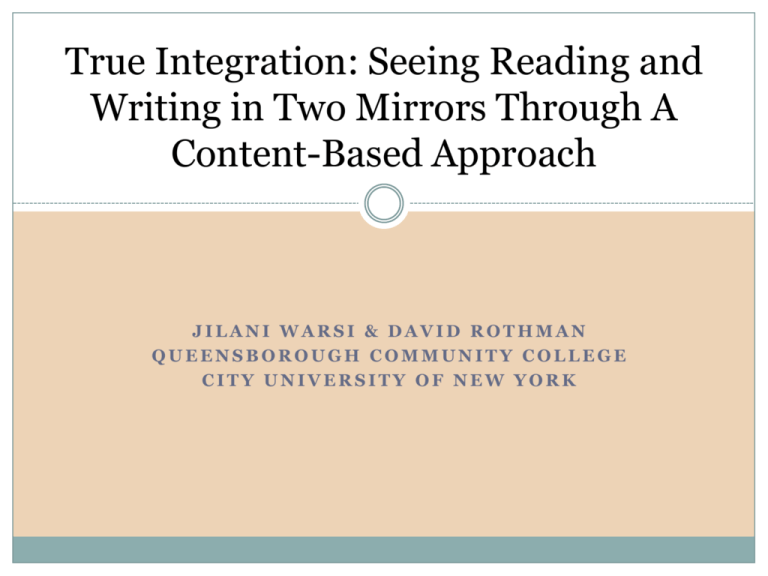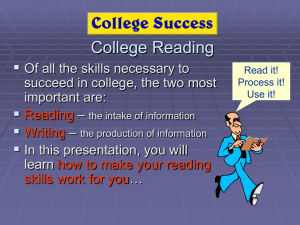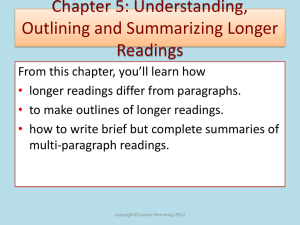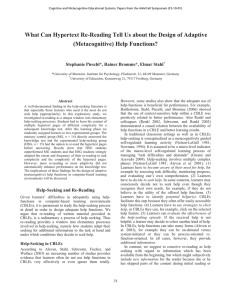Reading Final Exam Field Test Results
advertisement

True Integration: Seeing Reading and Writing in Two Mirrors Through A Content-Based Approach JILANI WARSI & DAVID ROTHMAN QUEENSBOROUGH COMMUNITY COLLEGE CITY UNIVERSITY OF NEW YORK Reading 2 Variety of Reading Genres Articles/Blogs/Fiction/Memoir Discipline Specific Vocabulary Determining Meaning from Context Identifying Main Ideas/Supporting Details Making Annotations Highlighting Re-reading Comprehension Questions Graphic Analysis Thinking: Reflecting on Text 3 Critical thinking discussion questions Outlining key ideas Formulating questions about the reading Debates Panel discussions Considering author’s bias Always questioning the basic premise of claims An Intellectual Journey: Academic Disciplines 4 Psychology: Can human behavior be changed? Criminal Justice: Do the police “protect and serve” us? Environmental Science: How can we best preserve all forms of life on earth? Business: Can business and ethics co-exist? Sociology: Are men and women truly different in any significant way? Writing: Responding to Text 5 Free Writing Response Writing through Blogging Summary Writing Formal Essay Writing Incorporating Appropriate Patterns of Organization Substantiating Claims with Evidence Coherence and Cohesion in Body Paragraphs The Art of Revising and Editing The Reading Process 6 Entering a Reading Active Reading: Highlighting and Annotation Focus and Motivation Re-Reading to repair miscomprehension The Writing Process 7 Pre-Writing: Notes and Outlining First Draft: From Paragraph to Essay Peer Review Responding to Feedback: Revising and Editing Traditional vs. True Integration 8 Traditional Skill-based approach Disjointed chapter readings targeting college reading skills In most cases, writing not fully integrated with chapter readings True Integration Content-based journey thematically organized All chapter readings focused around academic disciplines Higher order thinking activities to reflect on readings Various response writing assignments integrated with discipline-specific readings









